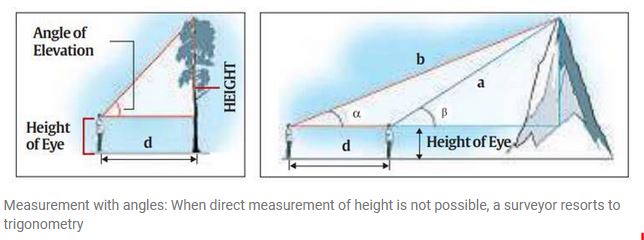Context
- Recently, Nepal and China have said they have measured Mount Everest to be 86 cm higher than the 8,848 m that it was known to be. What would that mean?
Key Details
- The 8,848-metre (or 29,028-foot) measurement was done by the Survey of India in 1954 and it has been globally accepted since then.
- The measurement was carried out in the days when there was no GPS or other modern sophisticated instruments. This shows how accurate they were even during that time.
- In recent years, several attempts have been made to re-measure Everest, and some of them have been produced results that vary from the accepted height by a few feet.
- But these have been explained in terms of geological processes that might be altering the height of Everest. The accuracy of the 1954 result has never been questioned.
- Most scientists now believe that the height of Mount Everest is increasing at a very slow rate. This is because of the northward movement of the Indian tectonic plate that is pushing the surface up. It is this very movement that created the great Himalayan mountains in the first place.
- It is this same process that makes this region prone to earthquakes. A big earthquake, like the one that happened in Nepal in 2015, can alter the heights of mountains. Such events have happened in the past. In fact, it was this earthquake that had prompted the decision to re-measure Everest to see whether there had been any impact.
- A 86-cm rise would not be surprising. It is very possible that the height has increased in all these years. But, at the same time, 86 cm in a height of 8,848 metres is a very small length.
Scaling a mountains’ height
- The basic principle that was used earlier is very simple and uses only trigonometry which most of us are familiar with, or at least can recall.

- There are three sides and three angles in any triangle. If we know any three of these quantities, provided one of them is a side, all the others can be calculated.
- In a right-angled triangle, one of the angles is already known, so if we know any other angle and one of the sides, the others can be found out.
- This principle can be applied for measuring the height of any object that does not offer the convenience of dropping a measuring tape from top to bottom.
- For small hills and mountains, whose top can be observed from relatively close distances, this can give quite precise measurements.
- But for Mount Everest and other high mountains, there are some other complications.
- These again arise from the fact that we do not know where the base of the mountain is.
Measuring against sea level
- Generally, for practical purposes, the heights are measured above mean sea level (MSL). Moreover, we need to find the distance to the mountain.
- This is done through a painstaking process called high-precision levelling. Starting from the coastline, we calculate step by step the difference in height, using special instruments.
- This is how we know the height of any city from mean sea level.
Adjusting gravitation anomaly
- But there is one additional problem to be contended with — gravity. Gravity is different in different places. It means that even sea level cannot be considered to be uniform at all places.
- So, the local gravity is also measured to calculate the local sea level. Nowadays sophisticated portable gravitometers are available that can be carried even to mountain peaks.
Technology solutions
- These days GPS is widely used to determine coordinates and heights, even of mountains.
- But, GPS gives precise coordinates of the top of a mountain relative to an ellipsoid which is an imaginary surface mathematically modelled to represent Earth.
- This surface differs from the mean sea level.
- Similarly, overhead flying planes equipped with laser beams (LiDAR) can also be used to get the coordinates.
